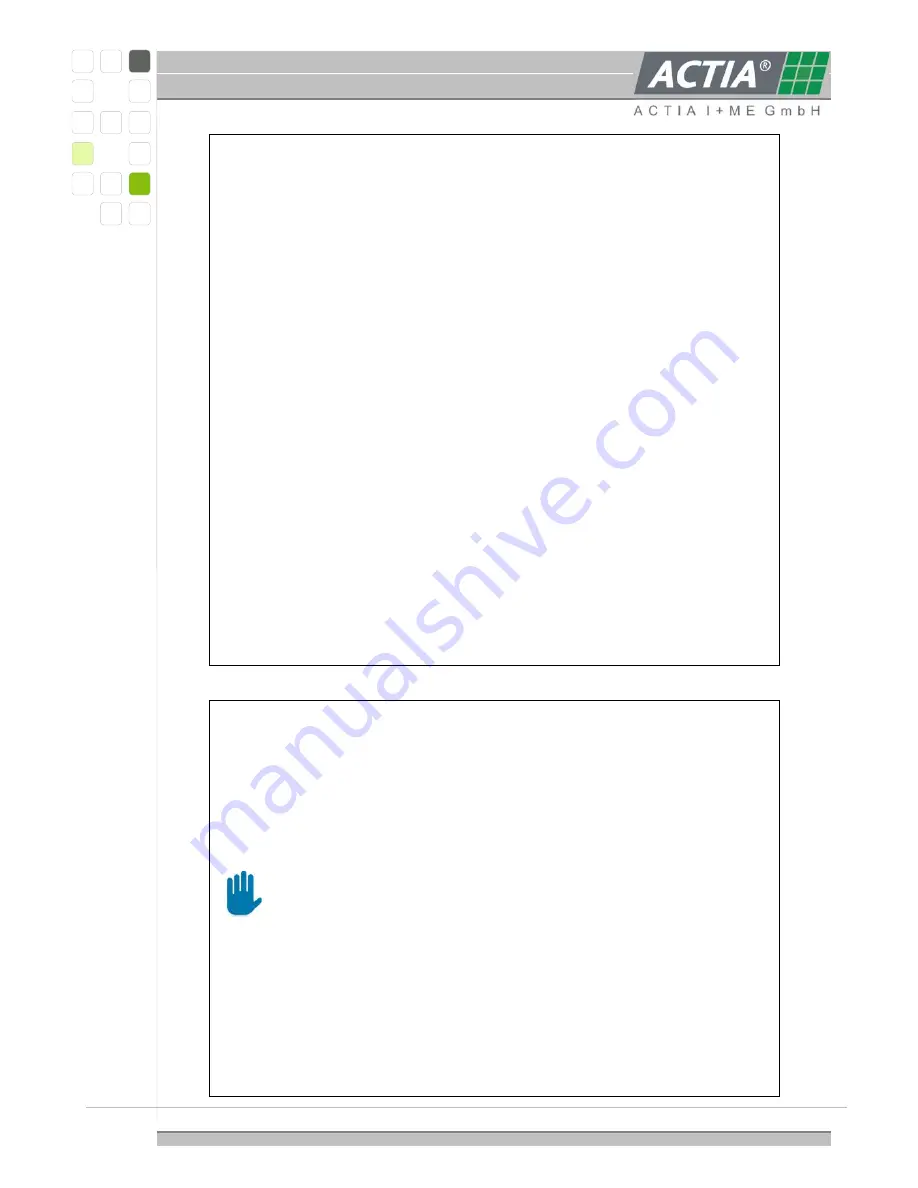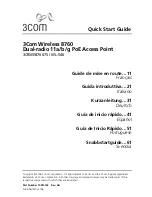
User Manual
ComXS-320
IR14618B User Manual ComXS-320 11.05.2017
Page 11/12
undesired operation of the device.
Under Industry Canada regulations, this radio transmitter may only
operate using an antenna of a type and maximum (or lesser) gain
approved for the transmitter by Industry Canada.
To reduce potential radio interference to other users, the antenna
type and its gain should be so chosen that the equivalent
isotropically radiated power (e.i.r.p.) is not more than that
necessary for successful communication.
The device for operation in the band 5150-5250 MHz is only for
indoor use to reduce the potential for harmful interference to co-
channel mobile satellite systems; the maximum antenna gain
permitted for devices in the bands 5250-5350 MHz and 5470-5725
MHz shall comply with the e.i.r.p. limit; and the maximum antenna
gain permitted for devices in the band 5725-5825 MHz shall comply
with the e.i.r.p. limits specified for point-to-point and non point-to-
point operation as appropriate.
Operation in the 5600-5650 MHz band is not allowed in Canada.
High-power radars are allocated as primary users (i.e. priority
users) of the bands 5250-5350 MHz and 5650-5850 MHz and that
these radars could cause interference and/or damage to LE-LAN
devices.
This equipment complies with IC RSS-102 radiation exposure limits
set forth for an uncontrolled environment. This equipment should
be installed and operated with minimum distance 20 cm between
the radiator & your body.
Cet appareil est conforme à la(aux) norme(s) RSS sans licence
d’Industry Canada. Son utilisation est soumise aux deux conditions
suivantes:
1. Cet appareil ne doit pas causer d’interférences et
2. il doit
accepter toutes interférences reçues, y compris celles susceptibles
d’avoir des effets indésirables sur son fonctionnement.
Conformément aux réglementations d’Industry Canada, cet
émetteur radio ne peut fonctionner qu’à l’aide d’une antenne dont
le type et le gain maximal (ou minimal) ont été approuvés pour cet
émetteur par Industry Canada. Pour réduire le risque
d’interférences avec d’autres utilisateurs, il faut choisir le type
d’antenne et son gain de telle sorte que la puissance isotrope
rayonnée équivalente (p.i.r.e) ne soit pas supérieure à celle requise
pour obtenir une communication satisfaisante.
Le dispositif de fonctionnement dans la bande 5150-5250 MHz est
réservé à une utilisation en intérieur pour réduire le risque
d'interférences nuisibles à la co-canal systèmes mobiles par
satellite, le gain d'antenne maximal autorisé pour les appareils
dans les bandes 5250-5350 MHz et 5470-5725 MHz doit se






























